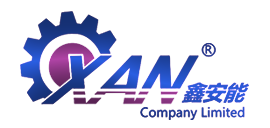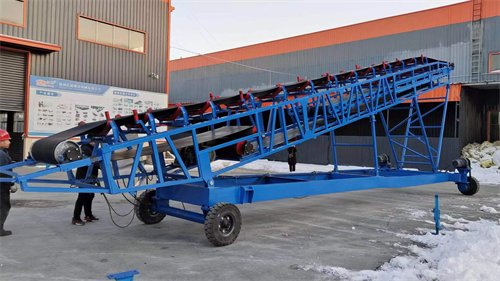
The roller conveyor can transport finished items with a flat bottom, such as plates, rods, tubes, profiles, pallets, box containers and various work pieces, horizontally or at a small inclination angle. Non-flat-bottomed items and flexible items can be transported using pallets. It has the characteristics of simple structure, reliable operation, convenient maintenance, economy, energy saving, etc. The most outstanding thing is that it can be well connected and matched with the production process and has functional diversity.

Roller shaft form table:
|
Shaft diameterФd |
Axle load kg/m |
Shaft form |
||||
|
8 |
0.395 |
10 |
8×15 |
|||
|
10 |
0.617 |
6×10 |
8×10 |
10 |
10×15 |
8×15 |
|
12 |
0.888 |
8×15 |
10×10 |
10 |
12×15 |
10×15 |
Measurement method
Rubber conveyor belts are measured in square meters. When customizing, the length and square meters should be stated at the same time.
(1) How to express the length of tape specifications
Bandwidth (mm) x number of fabric layers x [upper glue thickness (mm) + lower glue thickness (mm)] x belt length (m)
(2) The square meter conversion method of tape can be used
Number of square meters = tape width (meters) x [number of cloth layers + (upper glue thickness (mm) + lower glue thickness (mm))/1.5] x length (meters)
Detailed parameters
Generally, the main parameters are determined according to the requirements of the material handling system, the various conditions of the material loading and unloading location, the relevant production process and the characteristics of the material.
(1) Conveying capacity: The conveying capacity of the conveyor refers to the amount of material transported per unit time. When conveying bulk materials, it is calculated based on the mass or volume of materials conveyed per hour; When conveying finished items, it is calculated based on the number of pieces conveyed per hour.
(2) Conveying speed: Increasing the conveying speed can improve the conveying capacity. When the conveyor belt is used as the traction part and the conveying length is large, the conveying speed is increasing day by day. However, high-speed belt conveyors need to pay attention to vibration, noise, starting, braking and other problems. For conveyors with chains as traction parts, the conveying speed should not be too large to prevent the increase of dynamic load. For conveyors that carry out process operation at the same time, the conveying speed should be determined according to the requirements of the production process.
(3) Component size: The component size of the conveyor includes conveyor belt width, slat width, hopper volume, pipe diameter and container size. The size of these components has a direct impact on the conveyor's conveying capacity.
(4) Conveying length and inclination: The length of the conveying line and the size of the inclination directly affect the total resistance and required power of the conveyor.
Common faults
For a long time, the conveyor has been subjected to the impact of materials, ores, coal blocks and even metals, resulting in friction, resulting in serious impact wear, the most common being the impact wear of the coal falling cylinder and the impact wear of the deflector. When some material particles are relatively fine, they will cause the accumulation of materials due to the production process, installation angle, material humidity and other reasons.
Once the equipment is worn by impact, the traditional way is to replace the metal material with relatively high welding hardness, such as manganese steel plate. There are also wear-resistant liners made of riveted PE and other materials for protection, but once the anchor bolt is worn, it will cause the lining plate to fall off, block the blanking channel, and it is difficult to dredge, affecting the normal production of the enterprise. In view of the above-mentioned conveyor failures, Western countries mostly use polymer composite materials for treatment, among which the most mature application is the Meijiahua technology system. Its superior adhesion performance and super wear resistance safely solve the drawbacks of frequent metal wear and tear, and ensure the normal production of enterprise equipment. Moreover, the unique ceramic material and special surface reinforcing agent in the material make its wear resistance and physical impact resistance better than any steel or even more than ceramic tile in the harshest dry grinding environment, and the incompatibility between the material and coal is also an ideal material to prevent coal accumulation.
TradeManager
Skype
VKontakte